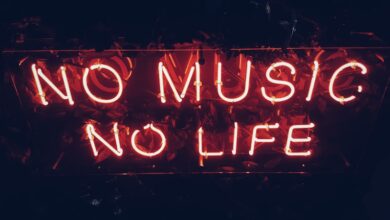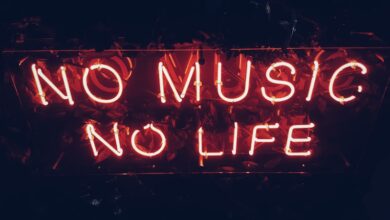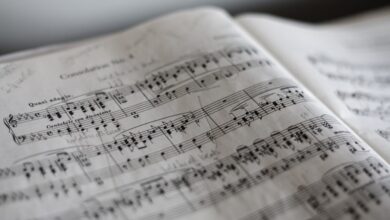The Rhythmic World of Percussion Instruments

Welcome to the rhythmic realm of percussion instruments, where beats and melodies come alive through an extraordinary ensemble of drums, cymbals, shakers, and more. In this article, we’ll dive into the captivating world of percussive sound, exploring the rich history, diverse types, and vibrant rhythms that make percussion instruments a vital part of music across cultures.
From the pulsating heartbeat of a tribal ritual to the energetic grooves of a rock concert, percussion instruments play a foundational role in creating rhythm and adding depth to musical compositions. They provide the driving force that sets the pace, ignites emotions, and compels us to move to the beat.
Think of a drum kit as an orchestra of rhythm. With its various components like the bass drum, snare drum, tom-toms, hi-hat, and cymbals, it offers a dynamic range of sounds. The thunderous boom of the bass drum, the crisp crack of the snare, and the shimmering resonance of the cymbals combine to form a distinctive and cohesive rhythm section.
But percussion goes beyond the drum kit. Bongos, congas, and djembes transport us to the heart of African traditions, infusing gatherings with infectious energy. The tambourine, maracas, and cowbell bring color and texture to Latin American music, evoking images of dancers swaying to lively beats. And let’s not forget the xylophone, glockenspiel, and vibraphone, whose melodious tones add a touch of enchantment to classical compositions.
When it comes to percussion instruments, each one has its unique voice and cultural significance. Whether it’s the soulful tabla from India, the mighty taiko drums of Japan, or the versatile handpan born from the Swiss Alps, these instruments carry the spirit of their origins and tell stories passed down through generations.
So, why are percussion instruments so captivating? The answer lies in their ability to connect us on a primal level. They awaken our innate sense of rhythm and tap into our deepest emotions. Through their resounding beats, they create a universal language that transcends boundaries, uniting people from all walks of life.
The rhythmic world of percussion instruments is a mesmerizing journey filled with diverse sounds, cultural traditions, and profound connections. Whether you’re listening to a symphony orchestra, joining a drum circle, or playing your own percussive masterpiece, let the vibrant rhythms transport you to a place where music speaks directly to the soul. Embrace the power of percussion and embark on a rhythmic adventure like no other.
Drumming Up a Storm: Exploring the Global Fascination with Percussion Instruments

Have you ever found yourself captivated by the primal beat of drums, the rhythmic pulse that reverberates through your soul? For centuries, percussion instruments have held a unique power over humankind, transcending cultural boundaries and mesmerizing people across the globe. In this article, we embark on a rhythmic journey to understand the global fascination with percussion instruments.
Percussion instruments form the backbone of music in countless cultures, resonating with our deepest instincts. From the thunderous roar of tribal drums in Africa to the intricate tabla rhythms of India, percussion instruments have served as a universal language of rhythm and expression. Their ability to evoke raw emotions is unparalleled, igniting passion and generating an electrifying aura wherever they are played.
One reason for the unwavering allure of percussion instruments is their innate connection to the human experience. Just like the beating of our hearts, drums provide a primal connection to our very essence. They mirror our emotions—pounding fiercely during moments of intensity and gently pulsating during moments of tranquility. It’s as if they possess a secret understanding of our innermost desires and struggles, allowing us to communicate non-verbally and connect on a profound level.
Moreover, percussion instruments offer a unique platform for cultural celebration and storytelling. Through the rhythmic tapestry they weave, percussive beats carry the rich heritage and traditions of diverse communities. Each drumbeat represents a chapter in the collective narrative of humanity, echoing tales of triumph, struggle, love, and loss. Whether it’s the energetic samba rhythms of Brazil or the haunting taiko drums of Japan, percussion instruments enable us to listen to the stories of civilizations past and present.

In today’s interconnected world, the global fascination with percussion instruments has only intensified. With the rise of digital platforms and social media, rhythmic masterpieces from every corner of the planet can be shared and appreciated instantaneously. People from different cultures and backgrounds now have the opportunity to explore and embrace the diverse world of percussion, expanding their musical horizons and fostering a deeper appreciation for our shared human experience.
The enchantment with percussion instruments transcends cultural boundaries and speaks to the core of our humanity. From ancient civilizations to modern-day symphonies, the beating of drums continues to evoke awe, inspire creativity, and forge connections among people worldwide. So, let yourself be carried away by the thunderous roar or gentle tapping of percussive beats and join in the universal language of rhythm that unites us all.
From Bongos to Taiko: Unveiling the Cultural Tapestry of Percussion Music
Can you feel the rhythm in your bones? Percussion music has a way of captivating our senses, making us tap our feet and move to its infectious beats. From the lively rhythms of bongos to the thunderous sounds of taiko drums, percussion instruments are the heartbeat of countless musical traditions worldwide. Let’s take a journey through the cultural tapestry of percussion music and explore the diverse sounds and rhythms that make it so remarkable.
Imagine yourself in the vibrant streets of Cuba, where the soul-stirring beats of bongos fill the air. The bongos, consisting of two small drums, are played with the hands, creating a rhythm that is both energetic and intimate. With their origins rooted in Afro-Cuban traditions, bongos have become synonymous with Latin American music, infusing it with a distinctive pulse that makes you want to dance. Whether it’s salsa, rumba, or mambo, bongos add an undeniable flair to the music, transporting you to the heart of the Caribbean.
Now, let’s travel across the globe to Japan, where the powerful resonance of taiko drums reverberates through ancient temples and modern concert halls alike. Taiko, which translates to “big drum,” encompasses a wide range of percussion instruments that vary in size and shape. These awe-inspiring drums are played with sticks called bachi, producing deep, thunderous sounds that echo through the soul. Taiko music embodies the spirit of Japanese culture, evoking a sense of strength, discipline, and unity. It is a testament to the power of rhythm in bringing people together.
Beyond these specific examples, percussion music is deeply ingrained in cultures worldwide. In Africa, djembe drums create intricate rhythms that tell stories of history and celebrations. In India, the tabla drums weave melodies with intricate hand movements, accompanied by the vibrant sounds of the dholak and mridangam. And let’s not forget the versatility of the drum set, driving the pulse of rock, jazz, and countless other genres.
The beauty of percussion music lies in its ability to transcend language barriers and touch the depths of our emotions. It connects us to our roots, reminding us of the rich cultural tapestry that weaves humanity together. So, the next time you hear the rhythmic sway of bongos or the commanding roar of taiko drums, take a moment to appreciate the diversity and wonder of percussion music. Let it transport you to distant lands and unite you with people from all walks of life, through the universal language of rhythm.
The Beat Goes On: How Percussion Instruments Shape Musical Rhythms Across Genres
The beat goes on, driving the heart of music and shaping rhythmic patterns across genres. Percussion instruments hold the power to create captivating melodies, infuse energy into compositions, and evoke emotions that resonate with listeners. From the primal beats of ancient drums to the intricate rhythms of modern drum kits, percussion has been an integral part of human expression throughout history.
Imagine a symphony without the heartbeat of the snare drum or a salsa band without the lively rhythm of the congas. Percussion instruments bring texture, depth, and a sense of movement to musical arrangements. They provide the backbone upon which melodies and harmonies can flourish, acting as both timekeepers and catalysts for creativity.
In the world of jazz, the swing of a cymbal and the syncopated patterns of a hi-hat define the groove. These percussive elements create an irresistible urge to tap one’s foot and sway to the rhythm. Jazz drummers, like the legendary Buddy Rich or the innovative Tony Williams, weave intricate patterns that challenge the boundaries of rhythm, adding layers of complexity to the music.
When we dive into the realm of rock and roll, the thunderous boom of the bass drum sets pulses racing and adrenaline flowing. The primal energy of pounding drums, crashing cymbals, and rattling tambourines ignites the raw power of this genre. Think of iconic bands like Led Zeppelin or The Who, whose thunderous percussion became synonymous with their distinctive sound.
Shifting gears to Latin music, the infectious beats of bongos, timbales, and maracas transport us to vibrant dance floors. The polyrhythmic nature of these instruments creates a lively tapestry of sound that gets hips swaying and bodies moving. From the fiery rhythms of Afro-Cuban music to the sensual sway of Brazilian samba, percussion is the driving force behind these infectious grooves.

Stepping into the realm of electronic music, drum machines and samplers unleash a world of infinite possibilities. These digital pioneers allow artists to mold and manipulate percussive sounds, creating futuristic beats that defy traditional norms. The rhythmic backbone of electronic genres like techno, house, and hip-hop is built upon the foundation of synthesized drums and percussion.

Percussion instruments shape musical rhythms across genres, acting as catalysts for creativity and providing the heartbeat of compositions. From the captivating swing of jazz to the thunderous energy of rock and roll, from the infectious rhythms of Latin music to the innovative beats of electronic genres, percussion plays a vital role in defining the character and emotion of music. So next time you tap your foot or sway to a catchy beat, remember the power of percussion and how it shapes the music we love.
Percussion Powerhouse: The Surprising Health Benefits of Playing Drums and Other Instruments
Are you ready to unleash your inner rockstar while reaping some surprising health benefits? Grab those drumsticks or any other musical instrument, because we’re about to explore the amazing world of percussion and its impact on your well-being. Playing drums and other instruments can do more than just create captivating rhythms; it can boost your physical, mental, and emotional health. Let’s dive into the percussion powerhouse and discover its hidden treasures.
First off, let’s talk about the physical benefits of playing drums. When you pick up those sticks and start pounding on the skins, you engage various muscle groups throughout your body. Your arms, shoulders, and wrists get a fantastic workout, improving strength and dexterity. It’s like going to the gym, but with an added groove!

But that’s not all. Drumming is a fantastic cardiovascular exercise too. As you drum away, your heart rate increases, pumping oxygenated blood to all parts of your body. This not only improves your stamina but also helps burn calories and maintain a healthy weight. So, forget about the treadmill for a moment and get your heart racing to the beat of your own rhythm.
Now, let’s shift our focus to the mental and emotional benefits of playing drums. Rhythm has a way of synchronizing our brain waves, promoting relaxation and reducing stress. When you immerse yourself in the rhythmic patterns of drumming, you enter a state of flow, where worries fade away, and you find yourself in a meditative zone. It’s a cathartic experience that allows you to express emotions and release tension.
Playing drums also stimulates cognitive functions. Coordinating different limbs, maintaining rhythm, and improvising require concentration and focus. Regular practice enhances your multitasking skills, improves hand-eye coordination, and sharpens your mind. Who knew banging on drums could be so mentally invigorating?
In addition to these benefits, playing drums can also foster a sense of community and boost your social well-being. Joining a band or participating in group drumming sessions creates bonds with fellow musicians, fostering teamwork and camaraderie. It’s a shared experience that brings people together, transcending language and cultural barriers.
So, whether you’re a seasoned drummer or just starting to explore the world of percussion, embrace the rhythm and let it work its magic on your health. The power of drums and musical instruments extends far beyond creating melodies; it can improve your physical fitness, enhance mental acuity, and nurture your emotional well-being. So, go ahead, grab those sticks, and let the beat of the drums guide you towards a healthier and happier life.




